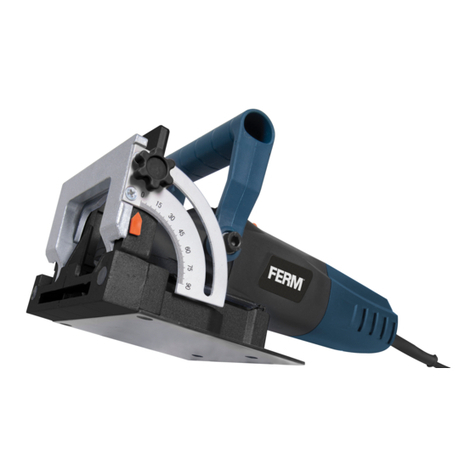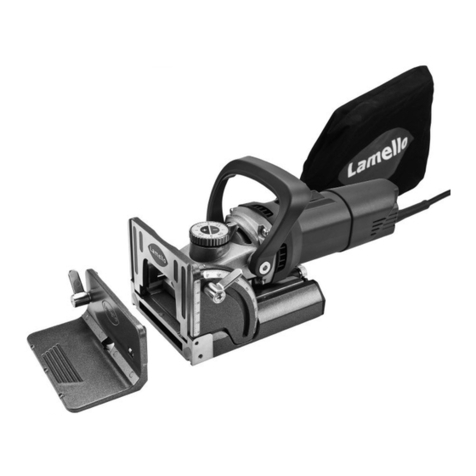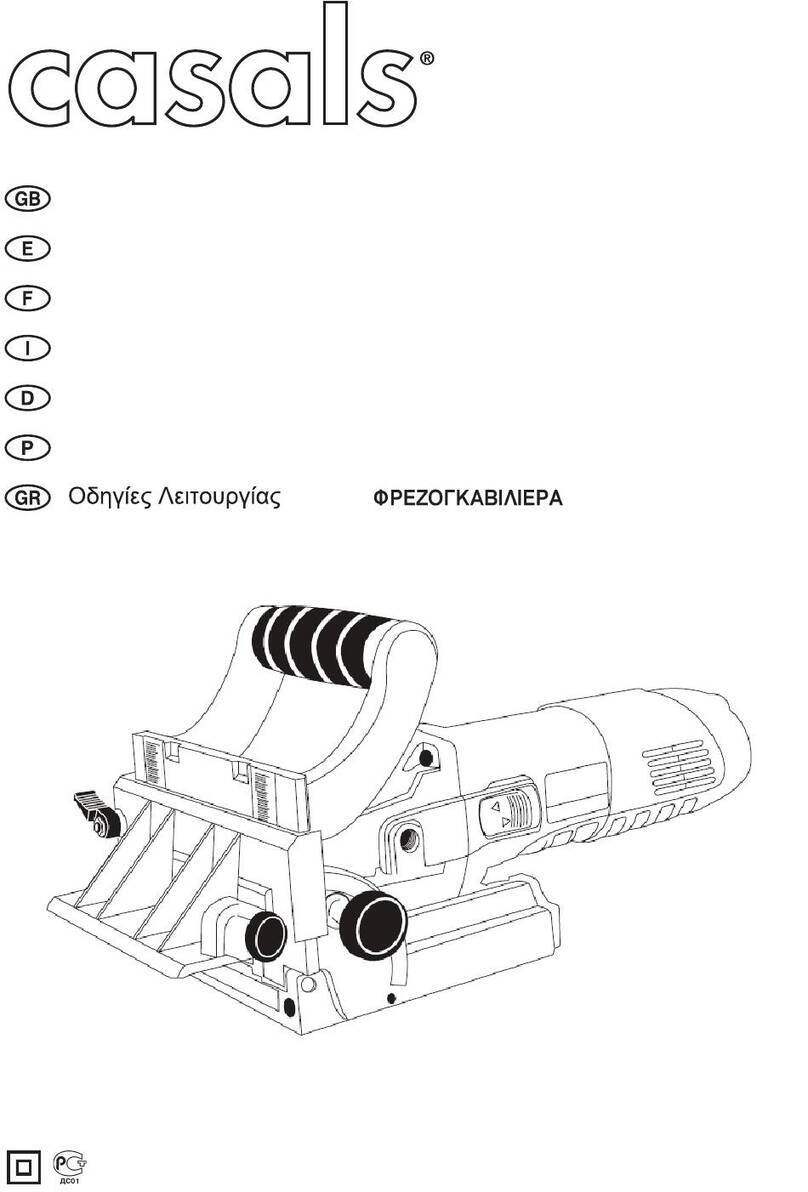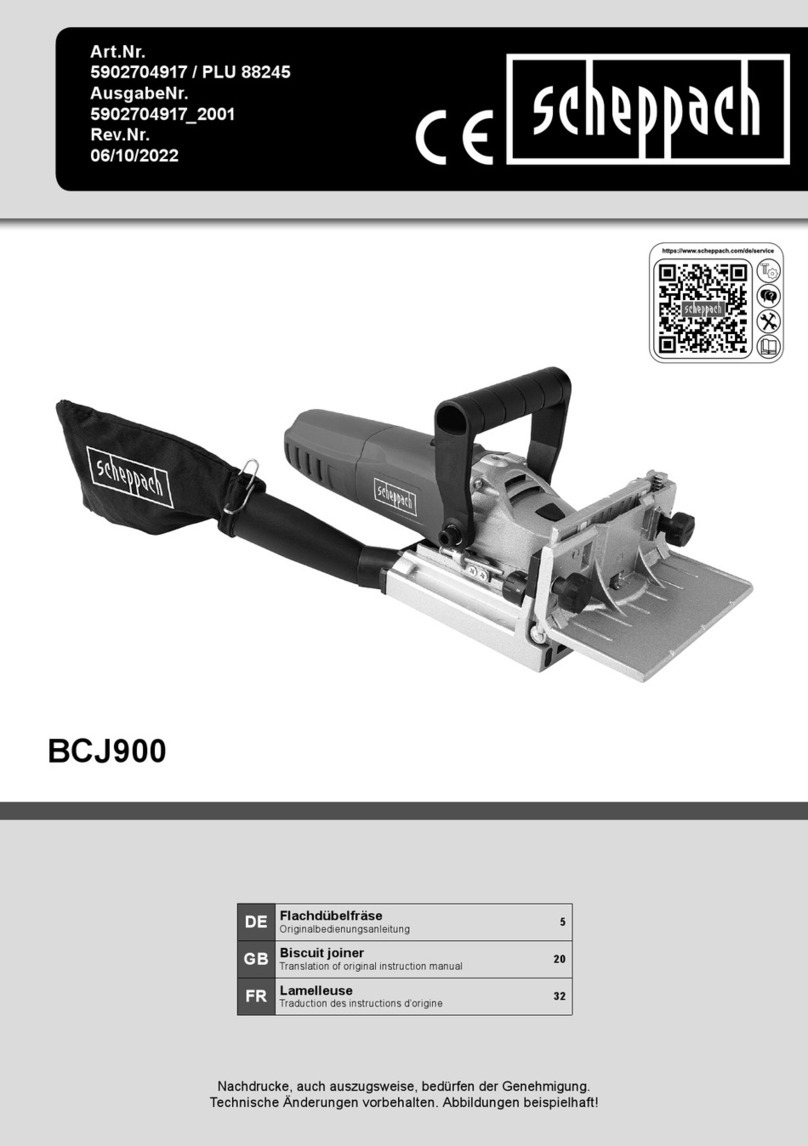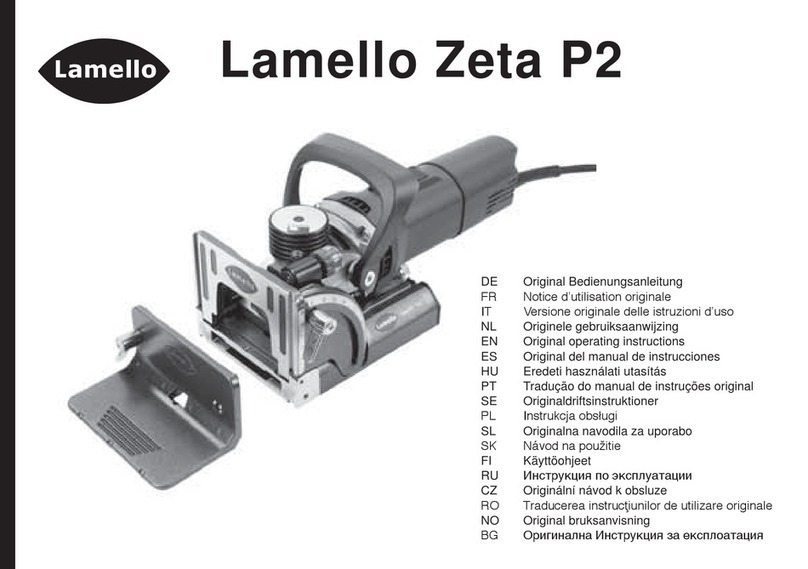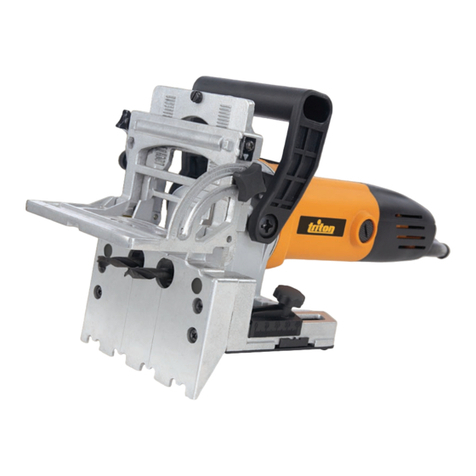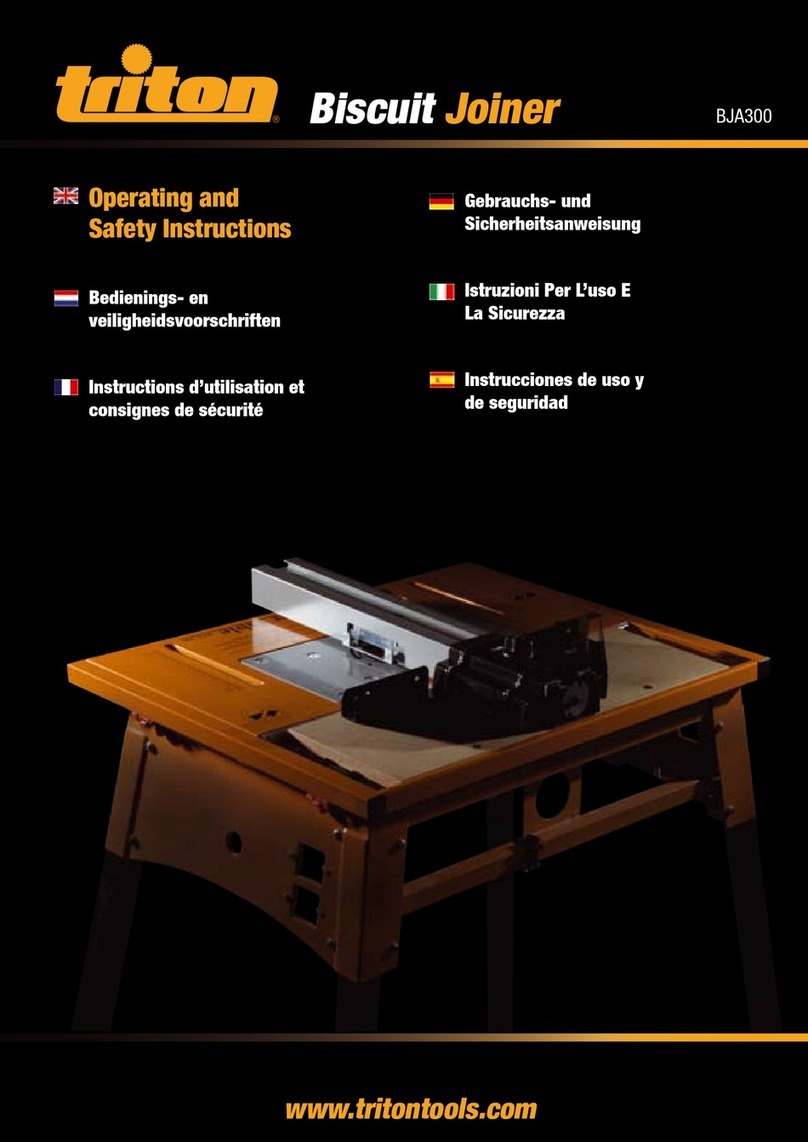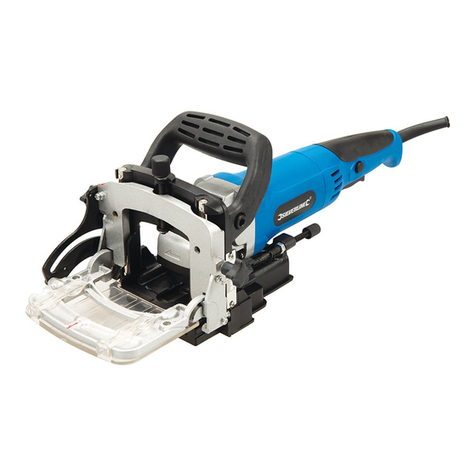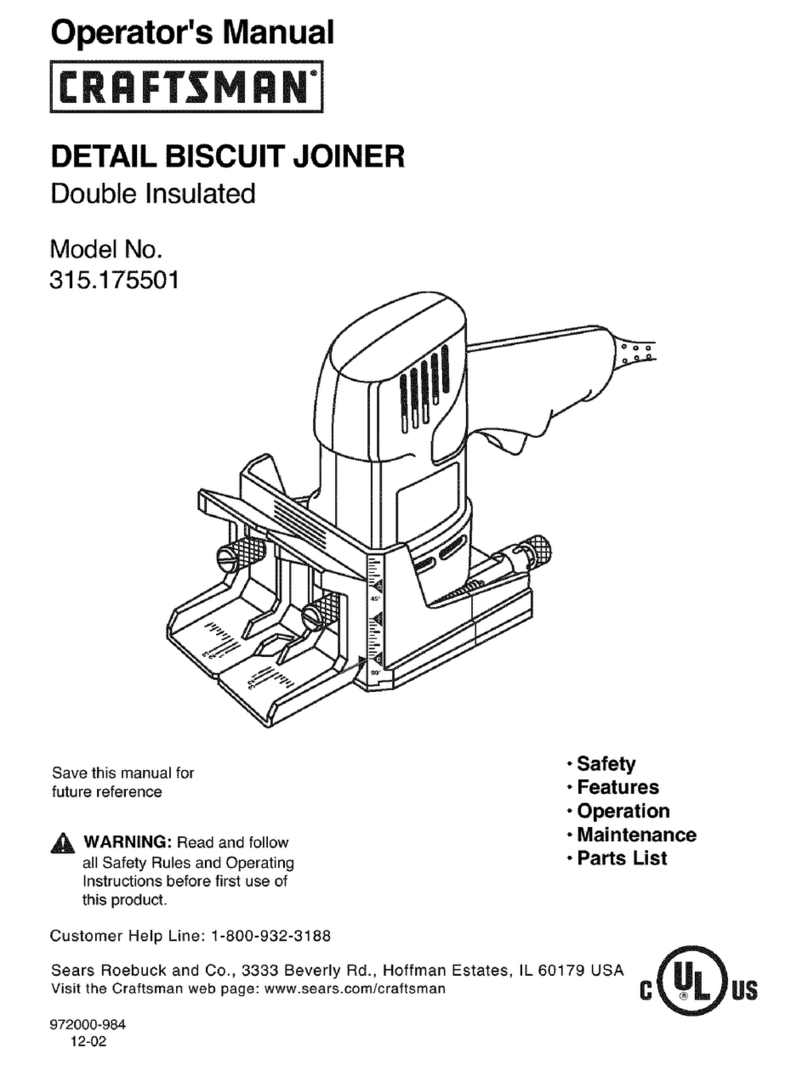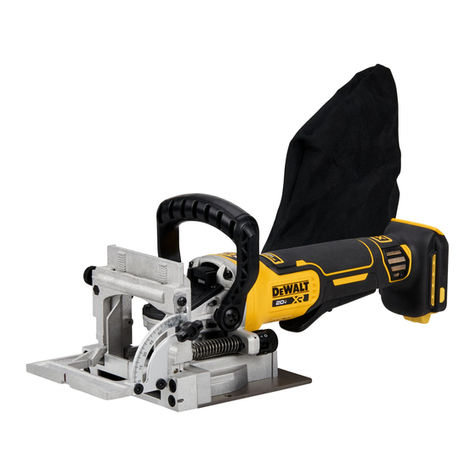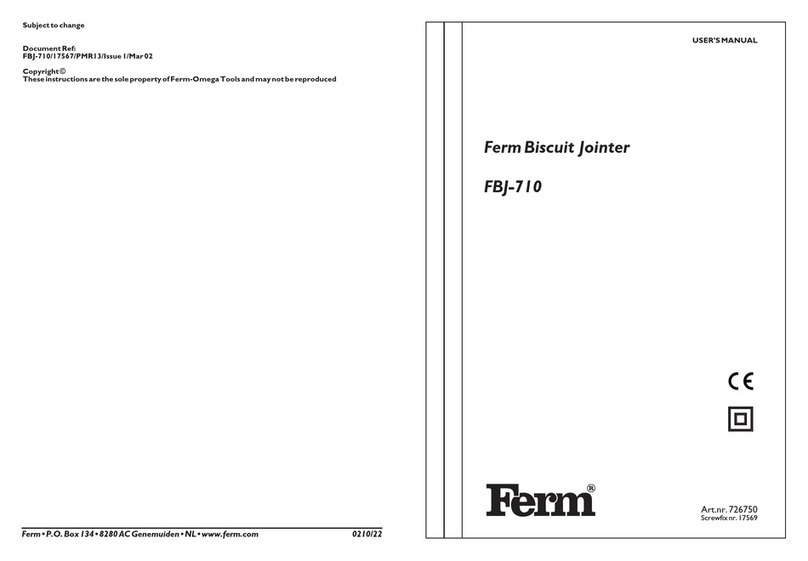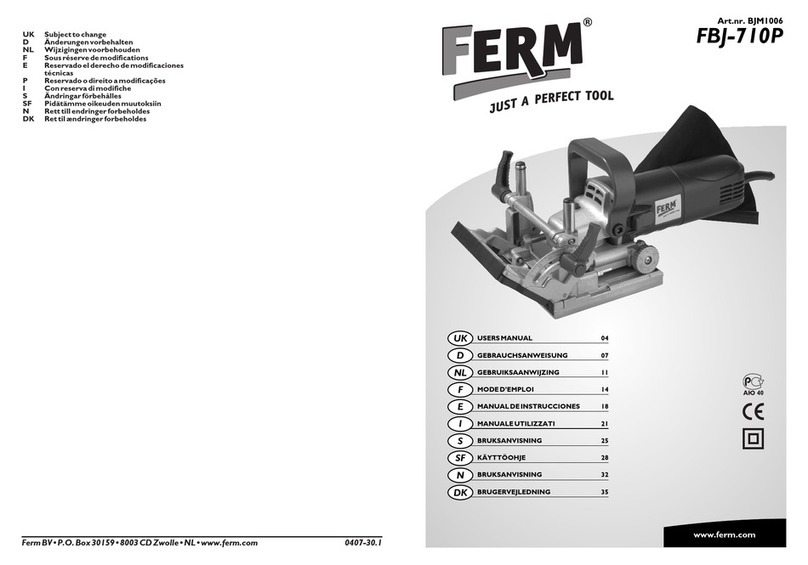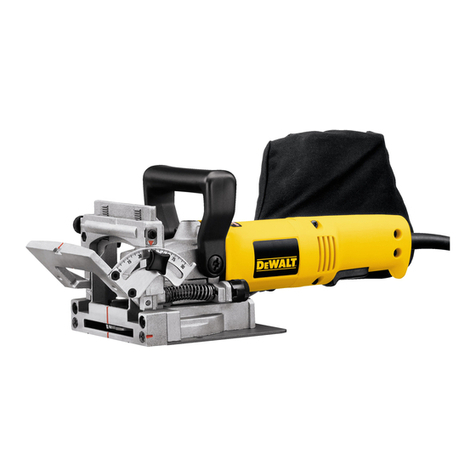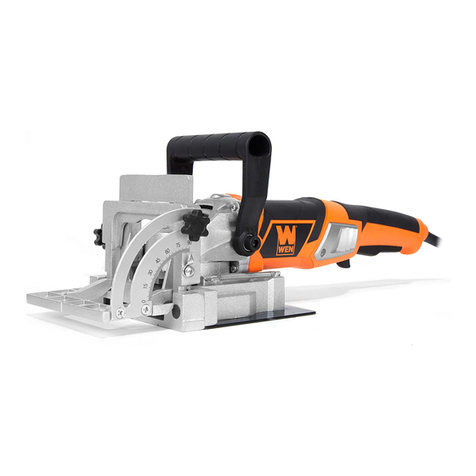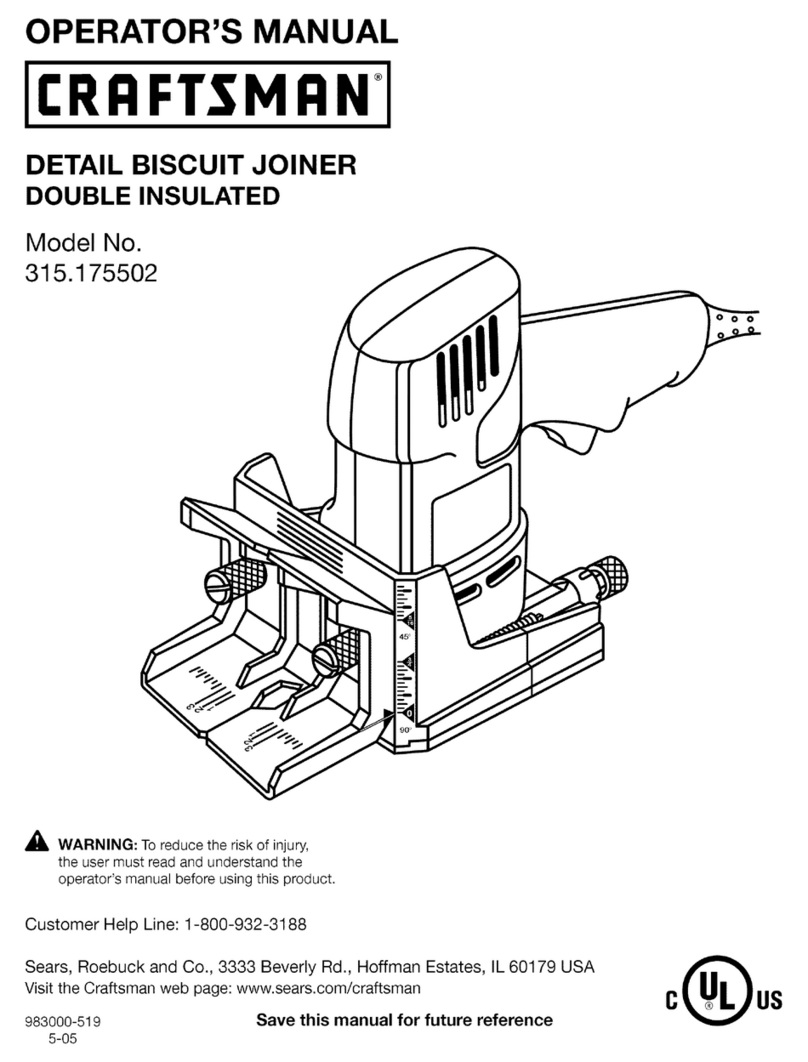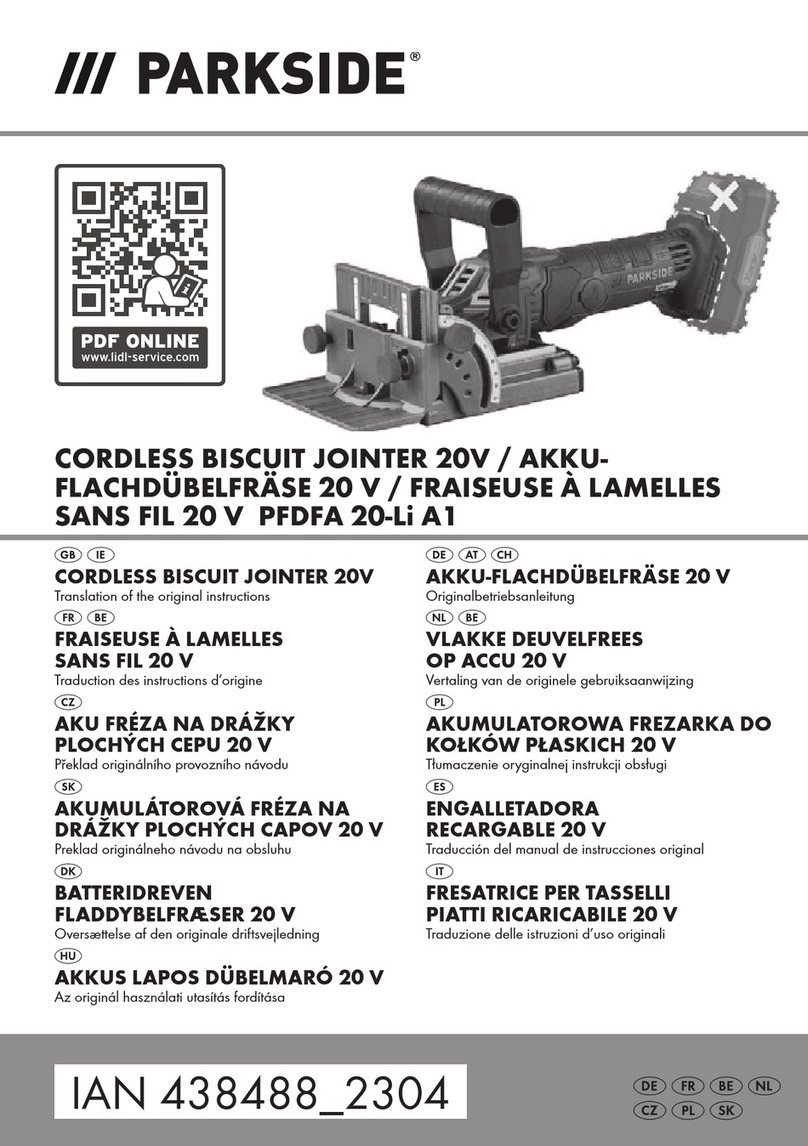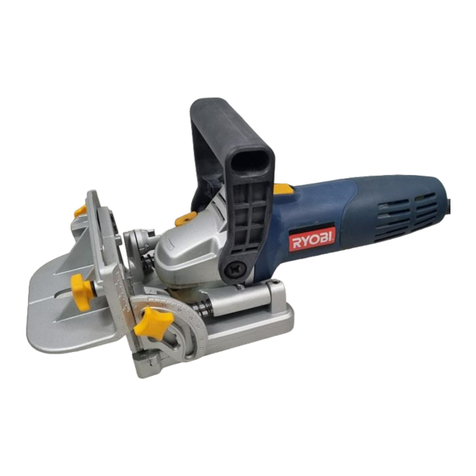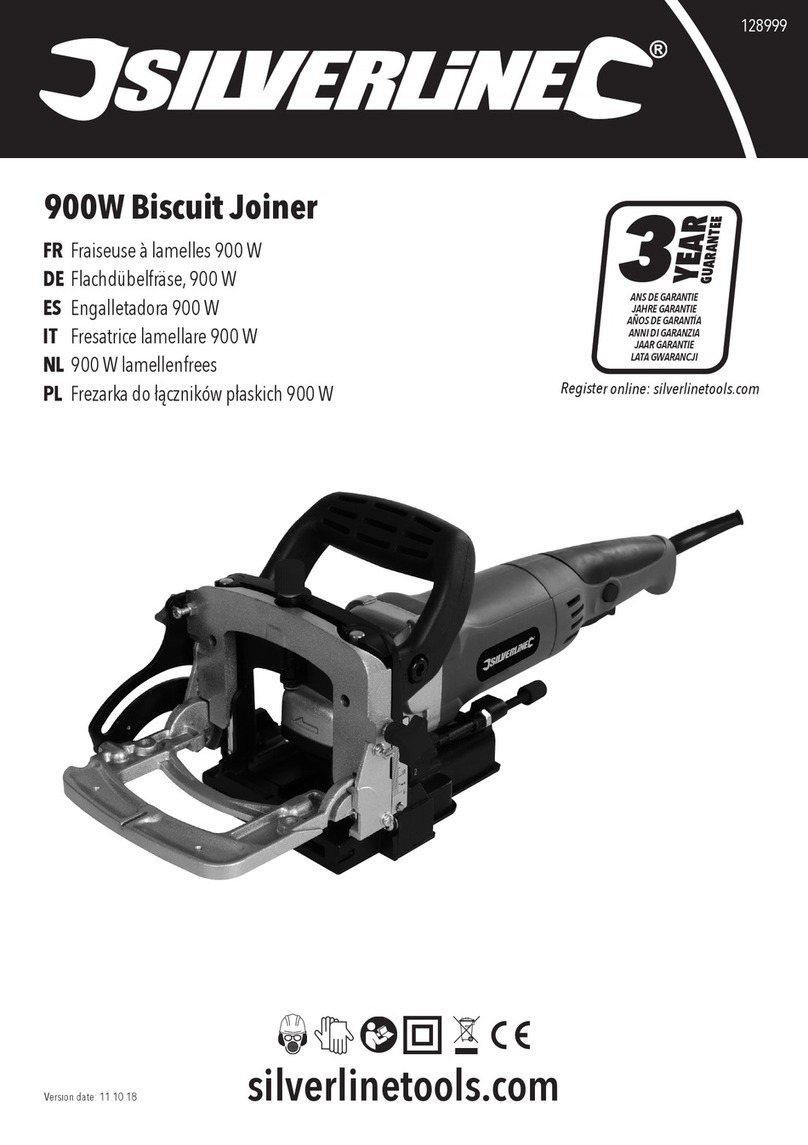PUA497 2.01
International Offices:
Canada - Toll Free: 1 888 874 8661
Japan - Free Call: 0120 171 079
New Zealand - Ph: (09) 415 2545
South Africa - Free Call: 0800 600 432
United Kingdom - Free Call: 0800 856 7600
USA - Toll Free: 1 888 874 8661
Made in Australia by: Triton Manufacturing & Design Co. Pty. Ltd. ACN 000 195 951 ABN 43 000 195 951
14-18 Mills St, Cheltenham, Vic. 3192 Ph: (03) 9584 6977 Fax: (03) 9584 5510
Page 8
Due to our company policy of continuous product improvement, specifications may change without prior notice.
Mid-panel Joinery
The Biscuit Joiner cannot be used for cutting slots more
than 25mm from an end or an edge of a panel. For
certain jobs (eg. sides of a bookcase or cabinet), consider
using another method of fixing shelves or dividers, such
as screws, rebated trenches, cleats or dowels.
If you prefer to use biscuits throughout you can purchase
from Triton a straight carbide cutter with a 4mm cut width
(part no. BJA045).
This cutter can be used for cutting mid-panel slots using
the router hand-held against a clamped batten.
Alternatively it can be done in the overhead mode on your
Workcentre using the optional Router Mounting Plate
(AJA150).
With a plunge router, and some practice, you can produce
slots with a curved bottom. However flat-bottomed slots
13mm deep by 40mm long are acceptable, and much
easier.
Biscuit Spacing
The number of biscuits required for particular joints will
depend on the type of material being joined and the loads
which the joint has to carry. As a rule of thumb, use one
biscuit (or row of biscuits) in material up to 20mm thick,
and two biscuits (or rows) in thicker materials, spaced
equally about 1/3rd the way in from either face.
The spacing between the biscuits along edge-to-face
panel joints and bevel joints should be around 150-
200mm. For long edge-to-edge joints, such as for a table-
top in natural timber, around 300mm between biscuits is
generally adequate.
Test Assembly
Test assemble your work before applying the glue to
check alignment and fit. Because the biscuits can move
lengthways in their slots, you can usually true up joints
easily.
The glue faces and the slots should be clean and dry
prior to gluing. Remove any sawdust or shavings by
brushing or blowing.
REPLACEMENT BISCUITS
Triton biscuits are specially shaped to suit the cutter
supplied. Replacement Triton biscuits are available from
your Triton stockist in packs of 50 (BJA050), or 500
(BJA056).
You can use other brands of biscuits, but they are a
different size. These biscuits, commonly called #10 and
#20 biscuits, require elongated slots. Use the reference
lines printed on top of the main body on either side of the
central line. Start at the line marked “20” and move the
wood towards the outside line, in the direction of the
arrow.
The #10 biscuit slots require the depth stops to be
adjusted to reduce the travel of the sliding insert.
GLUES AND GLUE APPLICATION
Good quality water-based adhesives, such as PVA glues,
are the most suitable for biscuit joining because they have
good quality wetting properties, and the moisture makes
the biscuits swell up evenly to tighten the joint. Epoxy and
resorcinol-type adhesives can be used, but we do not
recommend the use of highly viscous glues such as
construction adhesives.
Triton brand Premium Woodworking Adhesive offers
superior bond strength and better sanding and staining
characteristics than most commonly available PVA glues.
Available in 250ml, 500ml and 2.5 litre bottles.
Apply the glue sensibly. It is unnecessary and wasteful to
fill the slots with glue. On the other hand you need
enough glue to fully “wet-out” the sides of the biscuits.
Coat the biscuits with glue and/or paint glue on the walls
of the slots, using a thin spatula, a cotton bud, or a small
paint brush (a #6 artists size is ideal).
The best way to tell if you’re using the right amount of
glue is when you clamp the joint. A fine line of glue should
be squeezed out. Glue liberally dripping out indicates an
excess, and no glue visible means a starved joint.
CARE OF THE CUTTER
Inspect the cutter teeth regularly for chips or bluntness,
and remove accumulated resins from the tips. Have the
cutter professionally sharpened when blunt. When not
fitted to your router the cutter should be stored in its
special housing at the end of the main body to prevent
accidental tooth chipping.
Replacement cutters (BJA038) or cutting discs (BJA039)
can be ordered through your Triton stockist
Fig. 23
